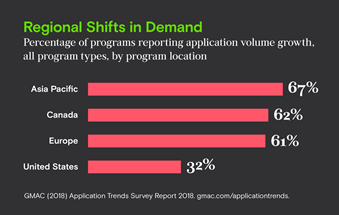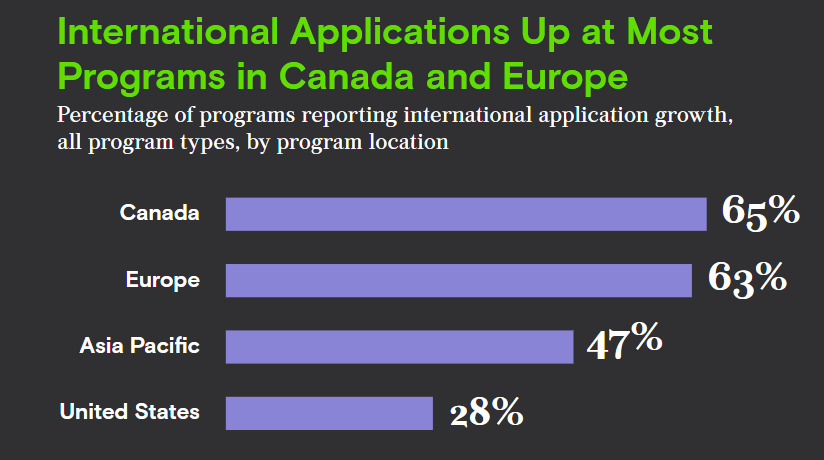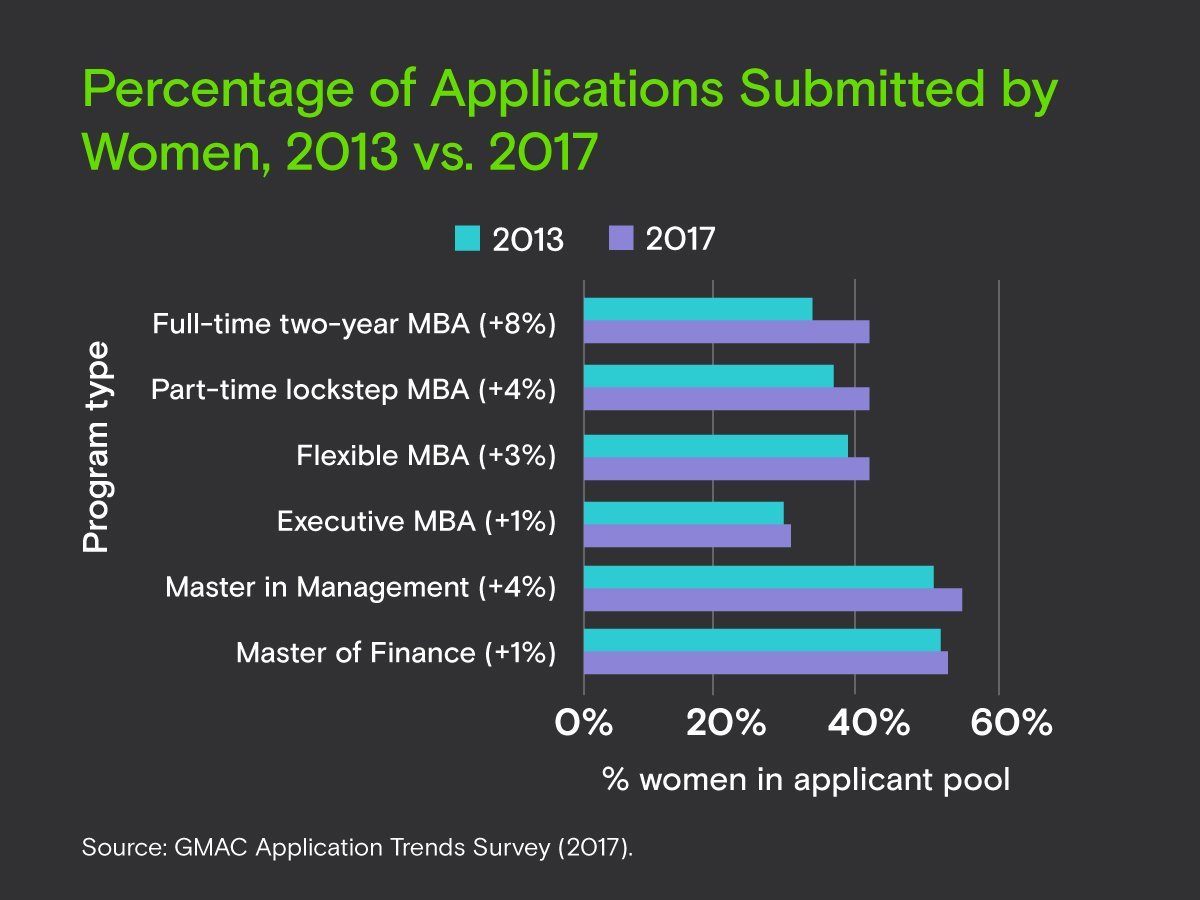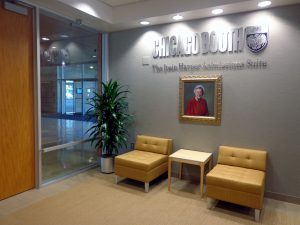
University of Virginia, Darden School of Business
With the U.S. economy at full employment, you’ve got to expect that this year will turn out to be a highly successful one for MBA graduates. But among the good news there are already signs that international graduates are having a tougher time landing jobs in the U.S.
The University of Virginia’s Darden School of Business reports a healthy 4.7% gain to $160,717 in average salary and bonus for this year’s MBA graduates, up from $153,453 a year earlier. Most of the jump was the result of an 11% rise in starting bonus to $35,430, reported by 93% of the class, from $31,966 last year, when 90% reported getting a sign-on bonus.
“The full economy is driving up MBA salaries and making it easier for MBAs to negotiate their offers,” says Jeff McNish, assistant dean of Darden’s Career Development Center. “I’ve had more conversations with students about negotiations than ever before. That could be one reason why signing bonuses went up, too. Employers are more apt to increase signing bonus than base.”
EMPLOYMENT GAP GREW LARGER BETWEEN U.S. & INTERNATIONAL STUDENTS
Darden reported that 94% of this year’s graduating MBAs had at least one offer of employment within 90 days of commencement, up from 93%. But within those figures there was a significant disparity between U.S. students and internationals. Only 85% of international MBAs had received a job offer in that same timeframe versus 98% of domestic graduates, a 13-point gap. A year ago, the gap was just two percentage points, with 92% of internationals reporting a job offer within three months of graduation vs. 94% of U.S. students.
“The gap between the U.S. and internationals is bigger than we would have liked it to be, but our outcomes are good,” adds McNish. While McNish points out that the U.S. government has not reduced the number of people getting H1B visas, it is making it more difficult for internationals to get those work visas. “The one thing we are hearing more is that the processing of immigrant documents is taking longer. More students and employers are getting requests for evidence than in the past.”
Besides the lower rates of placement, more internationals are also forgoing the chance to working the U.S. “We had a lot of international students decide to return home then they did in 2016,” adds McNish. “Many in the Class of 2018 had a plan B and saw opportunities blossoming at home and made the decision to return. We had a lot of international students decide to go home earlier than they did in the past. In 2016 and 2017, they might have tried a little longer.”
‘IF WE HAD NO IMMIGRATION CHALLENGES, OUR NUMBERS WOULD BE UP HIGHER’
Darden is the first prominent U.S. school to publish an employment report for the Class of 2018. It remains to be seen if other schools show similar statistics. If so, it will likely further discourage prospective students abroad from coming to the U.S. for an MBA. International applicants are down at many U.S. schools due to concerns over work visas and anti-immigration rhetoric in the U.S.
“Companies tell us they are carefully looking at this and proceeding cautiously,” adds McNish. “Many companies are still thinking about the international talent because there just isn’t enough U.S. talent available in the full employment market. If we had no immigration challenges, all of us would see our numbers up higher than they are today.”
For international students, says McNish, “it’s just going to take a little longer” to get a U.S. job. After the 90-day window closed for reporting employment three months after graduation, he notes, three more students reported getting jobs and two of them were international MBAs.
While consulting remained the industry of choice for Darden MBAs, with 32% of the class headed into that industry, consulting was slightly down from 34% a year earlier. The technology sector claimed a record group of the school’s MBAs, 18%, up four percentage points from 14% last year. Just as crucial, the median starting salary paid by tech firms rose significantly to $122,500 from $116,000 last year. Average starting bonuses in tech also went up in a big way to $41,170 from $30,926 (see table below).
MCKINSEY LEADS ALL MAJOR EMPLOYERS
Median starting salaries in consulting and financial services remained the same: $147,000 in consulting and $125,000 in financial services. While average sign-on bonuses in consulting also were up, to $31,940 from $28,118, signing bonuses were slightly down in financial services to $39,418 from $41,054 last year. Darden, however, does not report “other guaranteed bonus,” a bigger factor in financial services compensation.
More MBAs also accepted jobs in financial services, with 26% of the MBA taking jobs in that sector, versus 24% last year
This year’s top employers were led by McKinsey & Co., which hired 18 grads up from 14 last year, Amazon (17 versus 10 a year earlier), BCG with 15 hires, Bain with 14 hires, and J.P Morgan (13).
Darden graduates entered very diverse roles in 15 different industries and 25 different job functions. “Consulting jobs are big here and we’ve been focused on making sure our MBA program allows students to go into ny industry they want to,” says McNish.
Next year, meantime, is already shaping up as yet another banner year for MBA graduates. “All of our available slots for company briefings are full right now for the fall,” McNish adds. “Now we are scrambling to find time slots for five companies that want to come this fall for internship recruiting. Application volume may have been down, but I am seeing some of the brightest and most talented students ever. Employers are in for some really strong talent. We are having a great time working with them.”
Darden’s employment report–based on reports from 96% of the students looking for jobs–showed that 324 of 347 MBA graduates were seeking employment
















